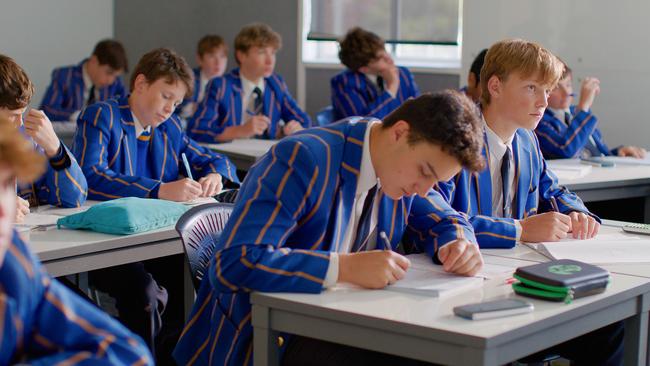Limiting smartphone use means students communicate with each other
A straightforward philosophy on limiting smartphone use prevails at Toowoomba Grammar School in Queensland, senior school head Mark Oliphant says.

A straightforward philosophy on limiting smartphone use prevails at Toowoomba Grammar School in Queensland, senior school head Mark Oliphant says.
“We want our boys to learn how to socialise with each other, and with staff; we try our very best to meet our parents’ expectations in this space as well,” Oliphant says.
Established in 1875, the boys’ school has 1154 students, including 288 boarders. Mobile phones have never been allowed in the classroom and boarders hand their phones to staff before dinner.
“We don’t want them with their phones at dinner, we want them to actually talk to each other,” Oliphant says.
“There’s always been limits to how much access kids have to their phones in boarding. We’ve become a lot stricter in terms of locking them away.”
The boys are permitted to collect their smartphones again, later in the evening, for a short time.
Meanwhile, the school’s wi-fi network is “very heavily monitored”; undesirable websites featuring gambling and pornography are blocked, and a report is generated if a student tries to access one of these sites. “We get a daily report of any boys who are trying to access anything they shouldn’t”, Oliphant says, conceding it can be hard to contemporaneously police sites students access using phone signals. However, past use can be seen.
The school’s monitoring technology is so sophisticated now that it can scan the sites students have visited when they reconnect to the school’s wi-fi network. There are a few ways around the monitoring, and boys will always find ways around it, but the school remains ever-vigilant, Oliphant says.
“Fundamentally we have a philosophy of doing our very best to protect kids from the dangers we know are online,” he says.
Youngsters can get addicted to screens, and addicted to other dangers that can be accessed on smartphones. Meanwhile, generative artificial intelligence has added another dimension to potential online dangers. A private schoolboy was arrested in June for allegedly creating and circulating about 50 deepfake nude images of his fellow female students at Bacchus Marsh Grammar in Victoria.
“We are acutely aware of the deep-fake technology that kids can access on smart devices,” Oliphant says.
Toowoomba Grammar School now uses programs to flag essays that include text generated by artificial intelligence.
Oliphant notes these detection programs are not always infallible, and an AI flag is simply an indicator. The student would then be interviewed, and his document history would be viewed to determine how much AI had been used.
“The next big challenge will be wearable technology; things like smart glasses in classrooms,” Oliphant says.


